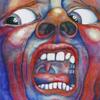-
November 08, 2010, 07:12 PM
#1
 Primicerius
Primicerius

 Course Syllabus ~ General Tips/Tricks ~ Reference Page
Course Syllabus ~ General Tips/Tricks ~ Reference Page
Course Syllabus:
Lesson One: Overview/Good Reference Pictures/Getting Familiar
Lesson Two: Creating Shapes, Scaling Shapes
Lesson Three: Using Shapes to Create, Part 1 ~ On hold
Lesson Four: Using Shapes to Create, Part 2
Lesson Five: Modeling from Scratch
Lesson Six: Precision Modeling, Part 1
Lesson Seven: Precision Modeling, Part 2
Lesson Eight: Editing Existing Models
Lesson Nine: Using Goat/Goal to Implement Models
~
General Tips/Tricks: Things to remember!
Lower your mouse sensitivity so you can make slower and more precise movements. (good for FPS games too!)
Zoom all the way out and create or scale your model so it fills the screen. This makes working on it much easier, and much less frustrating and time consuming.
Only make half of the model when possible, and then when you are done all you have to do is duplicate the model and “mirror” it. Making only half of the model means only half the work and half the time.
Try to use scaling for precision adjustments as much as possible; you may be able to achieve better results with less effort.
Don’t get frustrated working on one thing, move on to something else and come back to it later when you have a new perspective of the problem. This is always good for coming up with new ideas or methods and improving your problem solving skills.
Keep it simple, simple is better. Try to use as few verts and faces as possible. Don’t go crazy.
Don’t get ahead of yourself. Do not set lofty goals, set goals you can attain. Then work your way up to more challenging goals.
It may take time for you to become familiar with everything you need to know, this is normal! Practice makes perfect, but remember, it should be fun not work! If you are not having fun, then come back to it later when you WANT to. Having fun will definitely improve the quality and efficiency of your modeling.
~
Reference Page: Covers lessons already released.
Undo Changes = Ctrl+Z (shortcut)
Redo Changes = Ctrl+R (shortcut)
Selecting: This tool allows you to select or deselect verts or faces, it will also select any verts or faces behind it. Left click+ drag selects and Shift + Right click + drag deselects. By holding shift you can add to, or take away from your preexisting selection. The “ignore backfaces” box allows you to only select those faces or verts on the front of the side you are viewing from, and not all those behind. Selecting also allows you to select groups and joints.
Moving: This tool allows you to move any verts or faces that are selected wherever you wish. You may also choose which axis to move them on, i.e. X, Y and Z.
X = left and right, Y = up and down, Z = Forward and backward. And those are your three dimensions.
Rotating: This rotates any verts or faces that are selected, useful for maneuvering pieces into place. You can also choose which axis to rotate on, but I just do it manually from the windows.
Scaling: Scaling is a very useful tool for precision modeling, but has many general uses as well. Scaling can make your work a lot easier if you know how to use it. We will become a lot more familiar with the detailed uses of this as we progress through the course. You may also choose which axis to scale on, i.e. X, Y and Z.
X = wider/thinner, Y = taller/shorter, Z = fatter/skinnier.
Create Vertex: This tool allows you to create verts (dots), which are used to make faces (triangles). I will go into this later in the course when it will actually make sense.
Create Face: To use this tool you MUST create THREE verts, then select all three, and then press “F” which is the shortcut key for Create Face. This makes one face (triangle). I will go into this later in the course when it will actually make sense.
Flatten:
Ctrl+Shift+X: Places selection on the same X axis.
Ctrl+Shift+Y: Places selection on the same Y axis.
Ctrl+Shift+Z: Places selection on the same Z axis.
Refresh Textures: Resets any shaded or hard to see parts of your model.
Smooth All: Auto-Smooths your model making it look smoother where the verts connect. You should refresh your textures every time you finish a piece of your model, and after refreshing press Ctrl+M to smooth it out.
Spherify: This essentially enlarges and rounds your model out into a sphere depending on how much you use it. It is useful for making something more like a sphere. If you want something to look smooth and round than this is your tool. Try making a sphere and subdividing it by 4. Now try “Spherifying” it with different numbers to get a good idea of what it is for. Finally, try spherifying other shapes or only a certain part of your model and see what happens. Spherify can be useful at certain times if you know how to use it (i.e. making a head or helmet), but not very often.
Last edited by alreadyded; November 08, 2010 at 07:28 PM.
 Posting Permissions
Posting Permissions
- You may not post new threads
- You may not post replies
- You may not post attachments
- You may not edit your posts
-
Forum Rules











